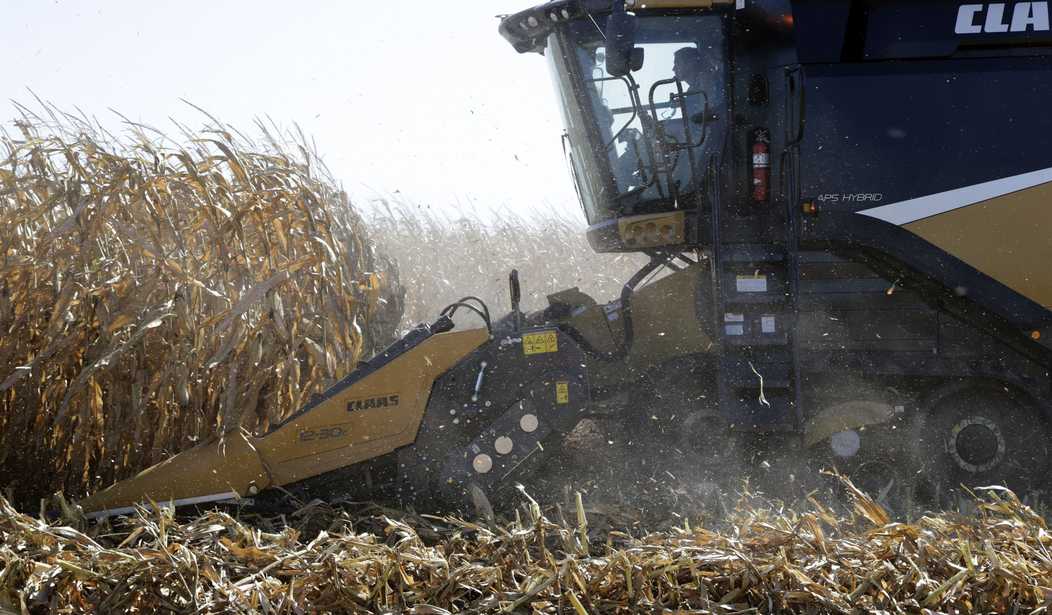Plenty of Midwestern kids in the late '70s made extra cash doing agricultural work in the summers. I certainly did: Haying, walking beans, working in my uncle's livestock auction barn on auction days - and detassling corn. The tassels at the top of each corn stalk produce pollen, which is spread by wind to other plants' silk, from where the pollen travels down to and fertilizes the kernels. Think of the tassel as the male part of the plant and the silk, as the female. In those days, hybrid corn strains were produced by planting the two strains you wanted to combine in alternating rows and then removing the tassels from one variety, ensuring that the rows would produce the desired hybrid seed.
Detasseling was done by hiring gangs of teenage boys and girls to walk the rows, usually in the hot sun, to manually pull the tassels from each stalk. And when Pioneer Seed company developed some shorter varieties of corn, it made things a lot easier not only for the equipment used in harvesting, but also for us detasselers. The development of those shorter strains - and the development of "short corn" today - despite what the Associated Press would have us believe, are not a response to climate change.
H. Sterling Burnett, Ph.D, Director of the Arthur B. Robinson Center on Climate and Environmental Policy and the managing editor of Environment & Climate News, has the receipts in an op-ed, via the Watts Up With That blog:
The Associated Press (AP) released a story claiming climate change is causing windstorms to worsen, threatening corn production, leading farmers to consider a new short corn variety. This story is false on almost every front. If farmers are considering a newly developed corn variety, its due to clever marketing by the company developing the crop, not changing climate conditions. Wind speeds and storms haven’t been increasing, aren’t forecast to at any time in the foreseeable future, and corn yields and production continue to set records with existing corn types.
Here's the problem, as Dr. Burnett shows: Corn yields, in the United States and elsewhere, are breaking records:
Data from the U.S. Department of Agriculture (USDA) and the U.N. Food and Agriculture Organization (FAO) also show no climate change impacts on corn yields or production in the United States or globally.
A recently updated USDA report says that corn yields are expected to set a new record in 2024, increasing by 0.5 bushels per acre over the previous estimate, and by a full six bushels per acre of the previous record set in 2023.
Data from the FAO confirm the USDA’s findings concerning U.S. corn production and also determine that corn production and yields are regularly setting records around the world as well. Between 1990 and 2022 (the last full year of FAO records), spanning the three decades climate alarmists commonly assert have been the warmest on record:
- Corn yields in the United States have increased by nearly 60 percent’
- Corn yields globally have increased by more than 54 percent.
Corn does quite well in warm climates; the grain that modern corn was developed from, teosinte, was native to central Mexico, a distinctly warm climate. Warm, humid climates are good for corn. I could describe from personal experience hot, humid, still days when you could literally hear the corn growing - a creaking, popping sound as the stalks reached skyward. I can remember my grandfather describing it as the sound of money.
But that's not the only thing the AP gets wrong. The UN's Panel on Climate Change has compiled wind data - and they aren't showing any change.
The AP and other mainstream media outlets usually treat reports and pronouncements of the U.N. Intergovernmental Panel on Climate Change (IPCC) as authoritative on climate change. The IPCC’s latest report is clear concerning the impacts of climate change on wind speeds and damaging windstorms: no change has been detected at present; and, under the even the most extreme climate scenario, no change is anticipated in the foreseeable future, through 2100 at least.
So, corn yields are setting records, there is no detectable issue with increased wind speeds damaging corn crops - so why the short corn? There may be several reasons.
First, see above - detasseling. As I understand it this is mostly done by machine now, but if any detasseling is still done by hand, it is belaboring the obvious to point out that shorter corn makes this job easier.
Second, water. The less stalk you have per plant, the less water it takes to grow said plant. Corn is already a fairly water-intensive plant, requiring irrigation in drier climates like eastern Colorado. Also, leaves and stalk are the 'waste' parts of the plant.
Third, yield. A smaller corn plant allows for denser planting, resulting in greater yields per acre. Also, shorter plants would presumably grow and mature more quickly, allowing planting at higher latitudes with shorter growing seasons.
The Associated Press is letting their bias show; they got this wrong, and badly wrong.
See Related: Consequences Finally Arrive for 'Just Stop Oil' Lunatics, and the Response Is Priceless
Activist Climate Group Has Harris' Number, Says It Can 'Pressure and Move' Her to Its Agenda
In short (hah), the Associated Press is either trying to deceive - or they are just plain wrong. Of the two it's easier to believe the latter; when it comes to the issues du jour, too many legacy media outlets just don't do their due diligence. Fortunately, in this case, Dr. H. Sterling Burnett has the facts for us.














